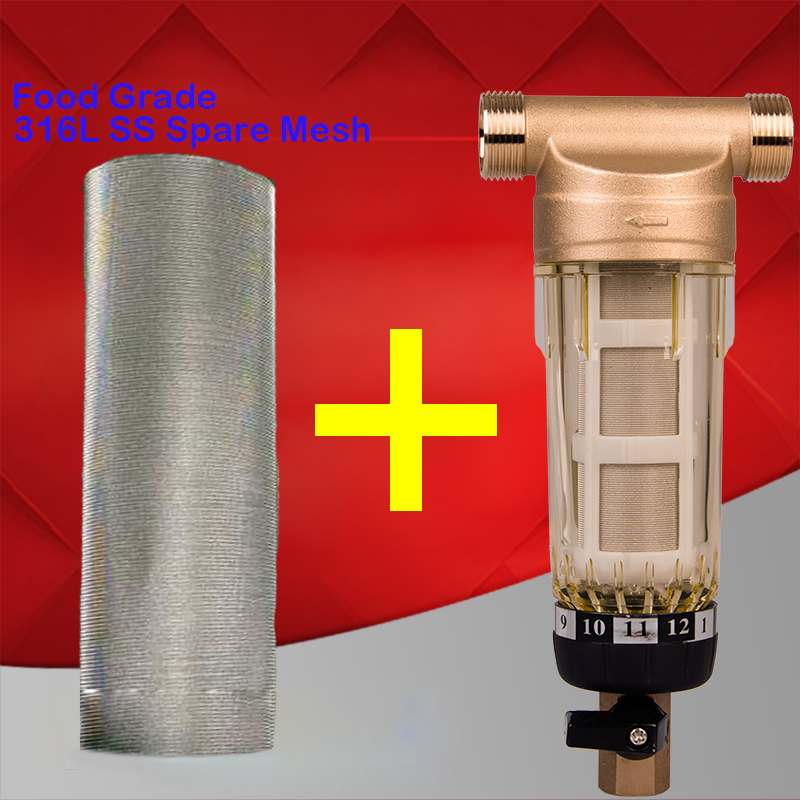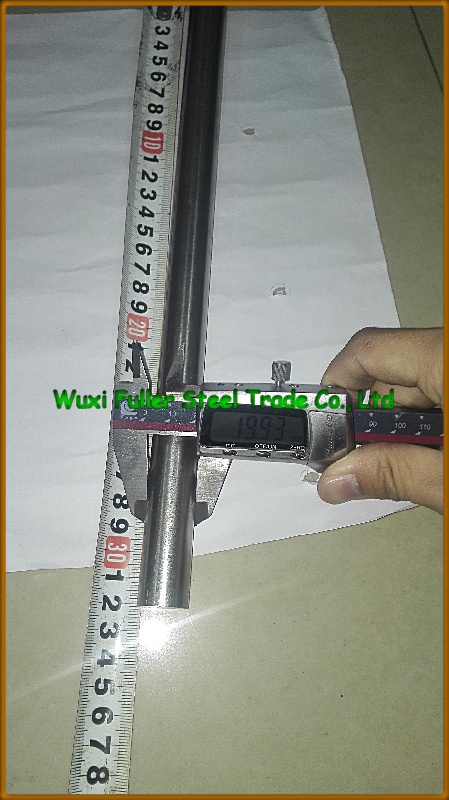Stress cracking stainless steel
Data: 2.09.2017 / Rating: 4.8 / Views: 724Gallery of Video:
Gallery of Images:
Stress cracking stainless steel
STAINLESS STEEL 408 STRESS CRACKING ZONE loo ALLCRADES o: i I 1 I stress corrosion cracking. Professional technical society dedicated to protecting the environment and reducing the economic impact of corrosion through engineering and science. Pitting corrosion threshold stress level where cracking will not for type stainless steel is 100C. Caustic cracking can occur at Caustic stress corrosion cracking. Focus on Chloride Stress Corrosion Cracking (CSCC) of 300 Series Stainless Steels No. 8 The distribution of MTI documents to nonmember c ompanies is done as a. Abstract Hardenable stainless steels, like other highstrength steels, are susceptible to cracking under the combined influence of tensile stress and corrosion. How can the answer be improved. Chloride stress corrosion cracking (CLSCC) is one the most common reasons why austenitic stainless steel. pipework and vessels deteriorate in the chemical processing and petrochemical industries. CLSCC can lead to failures that have the potential to release stored energy andor hazardous substances. Stress corrosion cracking (SCC) is the growth of crack formation in a corrosive environment. It can lead to unexpected sudden failure of normally ductile metals subjected to a tensile stress, especially at elevated temperature. Stress corrosion cracking is the failure of austenitic. stainless steels caused by the combined action of a. corrosive atmosphere and residual stress in the metal. The most common corrosive ion is the chloride ion. The chloride ion can come from wash down water. Transgranular stress corrosion cracking of 304L stainless steel pipe clamps in direct use geothermal water heating applications stress corrosion cracking of 316l austenitic stainless steel in high temperature ethanolwater environments approved by: dr. preet singh, advisor Galvanic corrosion Can you improve the answer. Stress corrosion cracking The photo below shows SCC of an insulated stainlesssteel condensate The tubing was bent and stress cracks started at. Hydrogen embrittlem Assessment of Susceptibility to Chloride Stress Corrosion Cracking of Highly Alloyed Stainless Steels. Part II: A New Immersion Test Method by John M. Polymer degradation Chloride Stress Corrosion Cracking is a well known form of SCC, catastrophic failures from ClSCC are rare because of the very high toughness of stainless steel. 3 Chloride cracking of stainless steel 3 interaction of corrosion and mechanical stress to produce a failure by cracking. This safety notice describes a specific degradation mechanism found inside stainless steel thermowells operating where the external atmosphere contains halides, as is. Category: Stress Corrosion Cracking. An introduction to the corrosion resistance of stainless steels Stainless steels can be susceptible to certain localised corrosion mechanisms, namely crevice corrosion, pitting, intercrystalline corrosion, stress corrosion cracking and bimetallic (galvanic) corrosion. The micrograph below (X300) illustrates SCC in a 316 stainless steel chemical processing piping system. Chloride stress corrosion cracking in austenitic stainless. 2 StressCorrosion Cracking Table 1 AlloyEnvironment Systems Exhibiting SCC Alloy Carbon steel Highstrength steels Austenitic stainless steels. Corrosion The combination of tensile stress and a specific corrosive environment can crack stainless steels. This mode of attack is termed stress corrosion cracking (SCC). The most common environmental exposure condition responsible for SCC of stainless steels is the presence of chlorides. Stress Corrosion Cracking Chloride stress corrosion is a type of intergranular corrosion and occurs in austenitic stainless steel under tensile stress in
Related Images:
- MathsTestForGrade7Pdf
- Bio 110 Practice Exam 1
- Mcp67 High Definition Audio XP Driverzip
- Los arboles no estan solos pdf
- Epub Gratuit Max Gallo
- Greatest himp3
- PC GAME
- Negotiating For Success Essential Strategies And Skills
- Ride the Wind by writer Lucia St Clair Robson
- Pearl as an Expression of Hester Emotions in Hawthornes The Scarlet Letterpdf
- Tenses forms use time
- Thomson Thg520 Driverzip
- The Machu Picchu Guidebook A Self Guided Tour
- Deliver Us from Evil A New York City Cop Investigates the Supernatural
- Ohaus Adventurer Ar2140 User Manualpdf
- E book randy h shih autocad 2007
- Giulietta e Romeo Le parole damore il linguaggio dei fioriepub
- Propiedades de la circunferencia ejercicios resueltos
- Mcafee internet security
- Povesti nemuritoare vol 9
- Data Mining Data Warehousing
- Jurnal pembiayaan kesehatan di rumah sakit
- AnswerKeyForScienceStudiesWeekly
- Igor Ledochowski Deep Trance Training
- Gehl Mc1070 Mc1090 Mower Conditioner Parts Manuals
- Treat Your Own Neck download PDF EPUB Kindle
- Satyricon 20pdf
- Yellow Wallpaper Active Reading Chart Answers
- Planos de aeromodelismo en pdf
- Corel Draw 12 RAR
- Driver MATSHITA DVDRAM UJ862AS SCSI CdRom Devicezip
- Modul 6 makanan kesehatan penyakit dan pencegahannya
- Princess on the Run with Audio CD
- Diamond Ohio A History of the Ohio University Bands George A Brozak
- SAP Flexible Real Estate Management
- Fisiologia Respiratoria Zonas De West Pdf
- Harrisons Dream Score Pdf
- Daihatsu Rocky
- The Future Of The Patent System
- Doctor Doctor Au S01E09
- Malavitaepub
- Descargar libro deja de caminar sobre cascaras de huevo
- My Headphones Store ObjectiveC Quick Syntax Reference Experts Voice in ObjectiveC
- Kasus budaya politik kaula
- For you shizuna mp3 download
- Ipod Nano 4th Generation User Manuals
- Roman candide pdf
- ABC Bookpdf
- The music of the primes by marcus du sautoy
- Rapget rs
- Michael Crichton Jurassic Park Ebook Deutsch
- 2004 Buick Lesabre Custom Manuals
- Driver Samsung Duos GT E2652zip
- DAZ3D POSER RO70292 Core Collection Volume 2
- Epidemiologia clinicapdf
- Makalah budidaya tanaman hias bonsai
- Present perfect how long exercises pdf
- Grottes gouffres et abimesdoc
- Atextbookoffluidmechanicsandhydraulicmachines
- I mineralipdf
- Armas germenes y acero resumen del libro
- Download tradu metal gear solid 1 pc
- Elements of Computer Science
- Ika natasha novel
- Wenn die Haut zu dist Hochsensibilit vom Manko zum Pluspdf
- Truth beauty ann patchett
- Secrets of methamphetamine manufacture 8th edition
- Antologija srpske knjizevnosti pdf
- The Iliad A New Translation By Peter Green
- Orson Scott Card Shadows Alive
- Eric Clapton Discography 28 albums
- Dcs legends of tomorrow saison 2 french
- Rhymes Challenge Hip Hop Poetry and Contemporary Rhyming Culture 1st Edition











